4BR Masterclass - An experts view on just what trombone mutes a serious player needs
18-Jun-2010Trombone virtuoso Derek Southcott provides an experts insight into the thorny old question of mutes.
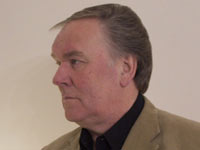 Introduction:
Introduction:
A little while ago I attended a meeting of brass band adjudicators, where the age-old question of mutes, and how players use them, was raised.
It was a very pertinent question at the time, as once again we were discussing the test pieces that were to played at the forthcoming Regional Championships – pieces that included extensive muted work.
The problem was illuminated further by the players of the band that played the pieces as part of the workshop headed by Dr Roy Newsome, who used a variety of mutes as they went about their insightful performances.
This was not done deliberately I must add, but inadvertently, but seemed to illustrate a problem that for some time has posed increasing problems for adjudicators in the box.
Seminar
Having the relevant scores placed in front of us I picked up on the aspect of wrong mutes and non matching mutes being used by some musicians, which for me as a former player and now adjudicator, gave a wrong atmosphere to certain passages of the contest piece.
At the conclusion of playing I queried this and put one or two pointers as to why it was important to use the correct mutes designated by the composer and to use matching mutes.
My colleagues took me up on this and suggested that I did a seminar on mutes, which I did later that year. Dr Roy Newsome meanwhile suggested that I should write an article for publication, as he felt it would be of interest to many band musicians.
So here it is.
Be serious about your equipment
As a background my experience on muted problems first arose after I left Black Dyke in 1971 to further my trombone career working for the BBC and the Syd Lawrence Orchestras.
It was only then that the real importance of mutes and matching mutes came to the fore. Syd Lawrence, a man of whom I had the highest respect for, was a perfectionist and insisted on matching and correctly fitted mutes.
Where as before we had taken the use and effects of mutes very liberally, now it became a matter of real importance.
At the BBC we had matching Humes & Berg fibre mutes (which all pro musicians posses) and these were commonly called in the business ‘Red Tops’.
Trial and error
At the time I had a new set of mutes and had to shave down the corks so that they fitted correctly in the trombone so that the mutes were in tune. As all players know, a wrongly fitted mute can cause great intonation problems.
With a Humes & Berg cup mute this is easily done, because the points of the scalloped edges should just touch the instrument bell end, but with other mutes I’m afraid it is very much trial and error.
You must be careful not to shave too much off the corks – too much and disaster awaits: too little and the mute simply doesn’t function as it should. For the purpose of trimming the corks use fine sand paper.
Getting a full range of mutes is also essential for the serious player – begging, stealing or ‘borrowing’ (much the same for some players!) isn’t an option.
If you are serious about what you want to do as a player then you must be serious about your equipment too.
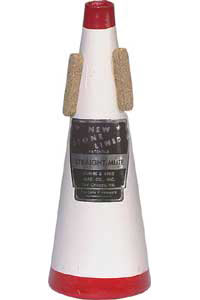 The Straight Mute
The Straight Mute
There are two main types: a metal one usually made out off a light alloy metal, or the fibre type.
The metal mute gives a more metallic, brighter sound in comparison to the fibre mute, which gives a softer sound.
It is essential that the same type is used to achieve a balance with other players in a section, but one could argue of course that an instrumentalist with a harsher sound may balance up to an instrumentalist with a rounder sound (food for thought) if you can mix and match mutes at times.
Do not however, confuse the metal straight mute with a tin mute, which, by its correct name, is a Harmon mute.
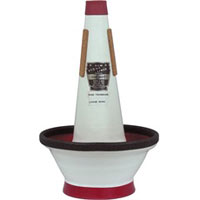 The Cup Mute
The Cup Mute
Here there are several types from the Humes & Berg scalloped type, previously mentioned to the metallic type with a felt lining in the cup such as the Denis Wick type.
There are also adjustable cups, where the cup can be moved either up or down a fixed centre cone to achieve different ambient sounds.
I tend to opt for the latter for close microphone work to achieve a warm romantic sound for certain solos.
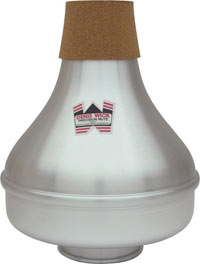 The Harmon Mute or Tin Mute
The Harmon Mute or Tin Mute
This mute must never be confused with the metal straight mute.
It is a totally different mute that has a centre plunger that can be moved in or out to provide a more prominent buzz sound.
The centre plunger can be moved to give differing ambient sounds, but it is most commonly used with the tube completely removed as this gives the best tonal effect.
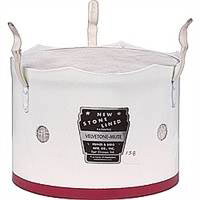 The Bucket Mute
The Bucket Mute
There are two types of Bucket Mute: the ones that clip onto the bell and the ones that push up the bell.
I find the one that clips onto the bell is easier to fix on and they tend to be lighter.
In dance orchestra work we only use these in the studio because we have a hat mute on a floor stand that we can move into quickly and achieve the required sound without having to clip on a bucket mute.
To alter the sound of these, you can pack out the bucket with extra padding – such as a common yellow duster!
The Mega Mute
A mute that is somewhat hard to find these days except in the dance orchestra world where it is used in certain Glen Miller compositions or in certain trombone solo items such as Tommy Dorsey’s, ‘Song Of India’.
This mute looks like one fibre straight mute coming out of another one with a hole up the centre.
The first really popular and successful ones were made by Humes & Berg, but strangely, this was the first mute that I ever used when I played at Crossley’s Carpet Works Band at the age of 14. The former solo trombone player must have been an old Glen Miller fan!
They are a bit of a rarity these days and the sound they produce doesn’t really suit ensembles with accompanying loud brass. As a one off though it’s a mute you should try and find.
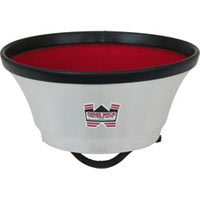 The Plunger Mute
The Plunger Mute
These are made of either rubber, fibre, plastic or metal and are a simple cup shape, which is held over the bell of the instrument in the palm of the hand.
This gives a Doo-Wah sound to the instrument and the use of in music is shown by the + and - signs.
My plunger mute is a 75 cents American sink plunger (with the stick taken out of course) and I have had this for the past 30 years.
It has great sentimental value to me as Bram Fisher, who was one of the trombone players next to me at the BBC, and a man who I highly respected, presented to me one day. He is sadly he is no longer with us, but it goes to show that sometimes you don’t have to shell out for a piece of equipment that does a brilliant job.
Conclusion
I do hope that this short article has provided a few pointers for players.
Even though I am a trombone player, the same basic rules apply for all mutes for all brass instruments.
Many bands and orchestras spend a fortune on instruments and yet cut corners on buying matching mutes. If your band is striving for perfection, then it is essential to have high quality mutes for the sake of the music being performed.
There is nothing worse than a band playing well then sounding awful because a section of the band is playing on poor mutes.
Mutes can be very expensive but there are pretty good discounts if you shop around, whilst also give a bit of thought about teaming up with colleagues to by a set between you if possible.
Properly looked after, mutes can last a lifetime (mine have so far) and they are an essential part of a serious musicians kit. Sheet cork, super glue, a pot of white paint and a pot of red paint can transform an old mute too, so don’t discard a great mute just because it starts to look its age (don’t we all!)
Derek Southcott
Derek Southcott:
Derek is a talented and highly respected musician having a rich experience in performance, teaching and adjudicating.
Always dedicated to his art, by the age of eighteen was the 'Champion Trombone Player' of Great Britain. In the same year he was also a member of the 'Champion Quartet' of Great Britain alongside his fellow members of the Black Dyke Mills Band.
No stranger to the world of entertainment, for twenty two years he played with the Syd Lawrence Orchestra as principal trombone and toured with international artists such as Shirley Bassey, Johnny Mathis, Tom Jones, Tony Christie, The Three Degrees and Sir Cliff Richard .
Derek has don e more than 4,000 recording sessions playing with the BBC Northern Radio Orchestra, James Shepherd Versatile Brass as principal trombonist, and Yorkshire television, Granada, Welsh television, the BBC and many independent television companies as a session musician and soloist.
As a teacher Derek spent six years as Professor of Brass Instrumental Teaching for the British Army.
He has spent three years as trombone tutor and examiner for the Leeds College of Music. Whilst trombone tutor at Barnsley College, Derek was the founder and musical director of their Dance Orchestra.
He still continues to work with young people and has been responsible for the development of music in schools, setting up and conducting successful wind bands, dance orchestras and brass groups in a number of schools in the Yorkshire and Lancashire areas.
As a soloist, conductor, adjudicator, consultant and clinician Derek has traveled extensively all over the world and continues to do so when the opportunity arises.
His credentials as an adjudicator are also impressive having adjudicated at the Stavanger Festival in Norway, Yorkshire Regional Championship, Butlins National Mineworkers Championship, Spennymoor Entertainments Contest, Youth Brass Entertainment Festival of Great Britain, Wharfdale Music Festival and National Youth Brass Band Championships of Great Britain.
Derek is a member of the Association of Brass Band Adjudicators and an approved adjudicator for the British Federation of Brass Bands.
Today Derek is kept busy playing with the Nick Ross Orchestra, and being the musical director of his own Caldervalley Youth Dance Orchestra and performing and recording with the Derek Southcott Sextet.















